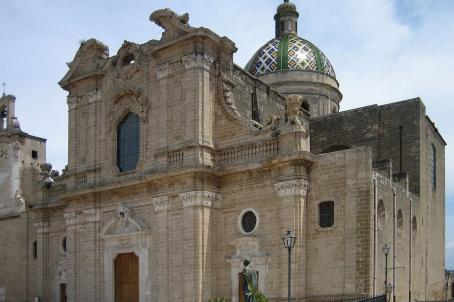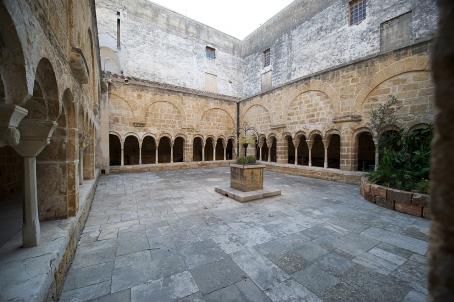Ostuni Co-cathedral

The construction of the Ostuni co-cathedral began in 1435 and was completed between 1470 and 1495. It has a characteristic late Gothic façade, divided into three parts by pilasters. The central part ends with a tympanum formed by two bent arches, the wings by two half-moons.





